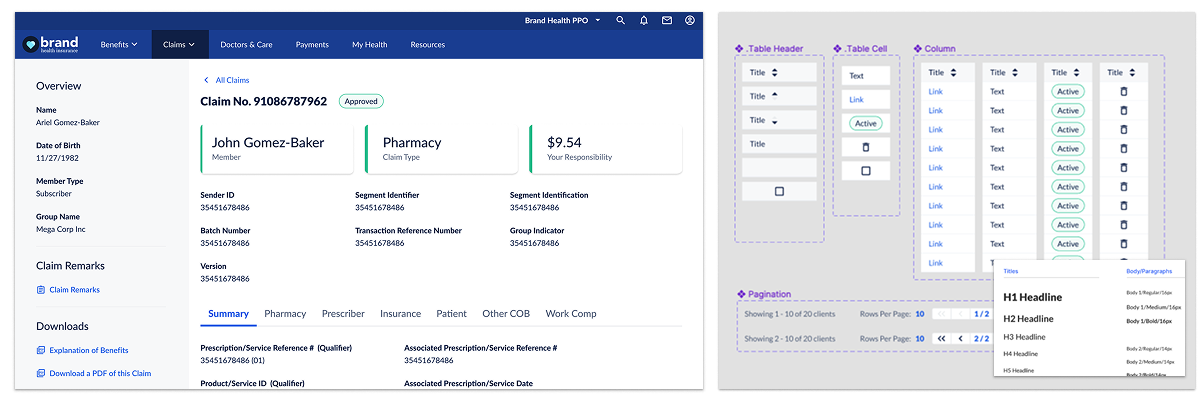
Project Context & Challenge
While Zipari's design system had strong foundations, managing and maintaining it in Sketch became slow and bloated as we integrated Healthx (acquisition) and evaluated external systems for our new CMS. The platform limited our ability to prototype quickly and collaborate effectively across multiple product teams.
I collaborated with product designers, design system maintainers, and development teams across Zipari and our acquired companies who needed unified design tools and efficient team workflows.
- Sketch's limitations in design system maintenance and version control
- Slow prototyping and limited team workflows
- Integration challenges with Healthx (acquired company) and evaluation of external systems for new CMS

Solution Approach & Implementation
I audited existing component libraries to identify gaps and inconsistencies, then educated our team on Figma's superior prototyping speed and team workflows through proof-of-concept migrations.
I led the migration to Figma with atomic design system, design tokens, and UI Builder integration for global asset management, enabling faster prototyping and seamless team workflows.
- Atomic design system with component variants and properties
- Design tokens for responsive and white-label theming
- Governance processes enabling designer self-service
- Component naming conventions established across teams
- Requirements coordination between Zipari and external teams
What We Achieved & Learned
- Unified design system consolidating multiple fragmented systems across acquired companies
- Improved workflows reducing time spent switching between design tools
- Self-service capabilities enabling faster design assembly for product teams
- Scalable architecture supporting white-label theming and rapid prototyping needs
- Token-based systems require upfront investment but dramatically reduce long-term maintenance overhead
- Migration success depends on training as much as technical implementation quality
- White-label healthcare products demand higher consistency standards and more systematic theming approaches